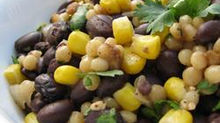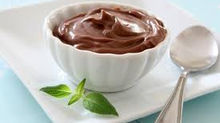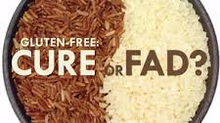Vitamin D and Health… the sunshine elixir and health game changer!
- Catherine Day
- Sep 13, 2015
- 4 min read
Vitamin D is a fat soluble vitamin which is essential for growth, development and overall health. As early as 1645 the deficiency disease of vitamin D, rickets in children and osteomalacia in adults, was clearly recognized due to the devastating effects on bone health. Deformed and misshaped skeletons caused knock knees and issues with breathing due to defects in the ribcage. However, in the 21st centenary these ill effects are less prevalent in the westernized world as we know that a dose of our sunshine elixir is all that is needed.
The sun is by far the best source of vitamin D but in many countries this is only true for the summer months. Therefore, dietary sources become critical during the winter months. Regions which are most affected during the winter months are those areas above 43° north between October and April when the zenith angle of the sun is such that UVB light does not penetrate the atmosphere.

So let’s take a step back to consider the following. In order for our elixir to function we need the sun’s UVB rays to penetrate our skin so that vitamin D can be activated and produced. This is quite a complicated process but all you need to know is that vitamin D3 is produced and this is further processed in the body to form the active component (1-alpha-25-dihydroxy vitamin D3) which is able to act as a hormone. The active component is also known as calcitriol and plays many roles within the body such as:
Regulation of gene expression (growth and protection vs prostate, colon & breast cancers)
Calcium and phosphorous homeostasis (in a nut shell = bone health)
Immunity (assists with the immune response)
Cardiovascular effects (possible reduced risk for high blood pressure and type 2 diabetes)
Neuromuscular effects (muscle strength)
As mentioned, during the winter months our elixir becomes almost previous and so we need to rely on either 1) dietary sources (examples include animal liver, fatty fish (salmon, halibut) and egg yolks) or 2) fortified foods (added vitamin D to sources which usually don’t contain much vitamin D, such as margarine) or 3) a vitamin D supplement. Our other option is to ensure that we are well informed regarding the risk factors that can affect vitamin D production. These risk groups include:
Those living at high latitudes and do not consume a vitamin D rich seafood diet and who are dark skinned. For example: individuals of African, Indian, Pakistani or Sri Lankan descent living at northerly latitudes who do not consume fatty fish.
Did you know Individuals with dark skin require longer exposure to UVB light to make adequate amounts of vitamin D therefore are at greater risk of deficiency during the winter periods.
Those who have a high body mass index (BMI) as research has shown that a larger fat mass can interfere with the functioning of calcitriol, the fat soluble vitamin/ hormone.
Those suffering from chronic kidney disease due to changes in metabolism of calcitriol as well as the effects of the dialysis they may receive.
Those who wear sunscreen or clothes covering their skin every day as this will block the sun’s UVB rays which will mean that calcitriol cannot be produced.
Did you know Sunscreen with a SPF of 15 can completely inhibit (block) skin vitamin D production when liberally applied, and partially inhibit skin vitamin D synthesis when the application is less complete.
So, how do you know that you are getting enough vitamin D? Ask yourself before applying sunscreen do you at least do the following two to threetimes per week,
Get 10-15 minutes of exposure to the sun on your arms and legs or
Get 10-15 minutes of exposure to the sun on your hands, arms and face.
Remember Sensible sun exposure is important due to the risk of skin cancers. The amount of sun exposure described above could produce enough vitamin D to last you through the winter months except if you are:
Unwilling or unable to go outside due to being bedbound, hospitalized or for those who work night shifts and sleep during the day
Wearing clothing over your arms and legs for religious/ cultural reasons
Receiving sunlight through glass (i.e. sitting in your office in the sun for a little while doesn’t count)
Receiving sunlight at the end of the day when the sun’s rays are weaker and not at the correct angle (TIP: try get out during lunch or between 11 am – 3pm instead of at the end of the day)
Spending more time outside during certain seasons (TIP: summer sun is better than winter sun)
Living in areas with a vast amount of atmospheric pollution (pollution impedes UVB light)
Pregnant women or a breastfeeding mother (requirements may exceed supply)
Elderly (skin production of vitamin D via UVB light is less efficient)
Now before we get too technical, the thought I would like to leave you with is the following…
When the elixir is available and the good old sun is providing us with GREAT sunshine, make the most of it BUT be sensible… Sunshine goes hand in hand with getting OUTDOORS and so does EXERCISE. So get outdoors and kill two birds with one stone! Improve your fitness, aim for a normal BMI and get in your vitamin D!”
DID YOU KNOW? The World Health Organisation recommends that we do 150 minutes of exercise per week for general health. This can be broken down into shorter intervals such as 30 min x5 or 50 min x3. Should you have weight loss goals in mind, you need to “up” the exercise as 300 minutes (60 min x5) of exercise per week is recommended.

So you see, Vitamin D and a range of other nutrients could benefit you in various ways. Practicing a good health regime could you see you with an improved physical, mental, financial and emotional disposition.












































Comments